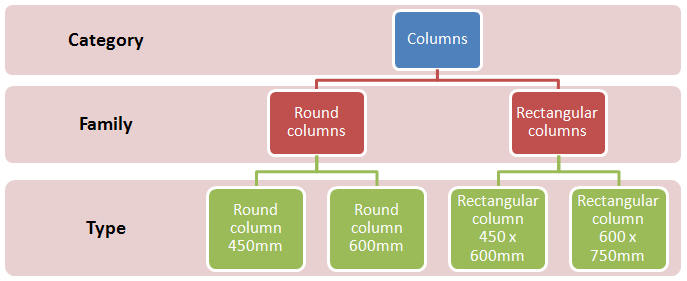Most of the terms used to identify objects in Vasari are common, industry-standard terms. However, some terms are unique to Vasari. Understanding the following terms is crucial to understanding the software.
Project
In Vasari, the project is the single database of information for your design—the building information model. The project file contains all information for the building design, from geometry to construction data. This information includes components used to design the model, views of the project, and drawings of the design. By using a single project file, Vasari makes it easy for you to alter the design and have changes reflected in all associated areas (plan views, elevation views, section views, schedules, and so forth). Having only one file to track also makes it easier to manage the project.
Level
Levels are infinite horizontal planes that act as a reference for level-hosted elements, such as forms and mass floors. Most often, you use levels to define a vertical height or story within a building. You create a level for each known story or other needed reference of the building.
The following image shows a Level 2 work plane cutting through the 3D view, and the corresponding floor plan next to it.

Element
When creating a project, you add parametric building elements to the design. Vasari classifies elements by categories, families, and types.

Category
A category is a group of elements that you use to model or document a building design.
Examples
- Categories of mass elements: forms that can be used for energy analysis and solar radiation analysis
- Categories of annotation elements: tags, text notes
Family
Families are classes of elements in a category. A family groups elements with a common set of parameters (properties), identical use, and similar graphical representation. Different elements in a family may have different values for some or all properties, but the set of properties—their names and meaning—is the same.
- Loadable families can be loaded into a project and created from family templates. You can determine the set of properties and the graphical representation of the family.
- System families are not available for loading or creating as separate files.
- Vasari predefines the set of properties and the graphical representation of system families.
- You can use the predefined types to generate new types that belong to this family within the project. For example, the behavior of a level is predefined in the system. However, you can create different types of levels with different compositions.
- System families can be transferred between projects.
Examples
- Mass floors and levels
- In-place families define custom elements that you create in the context of a project. Create an in-place element when your project needs unique geometry that you do not expect to reuse or geometry that must maintain one or more relationships to other project geometry.
Because in-place elements are intended for limited use in a project, each in-place family contains only a single type. You can create multiple in-place families in your projects, and you can place copies of the same in-place element in your projects. Unlike system and standard component families, you cannot duplicate in-place family types to create multiple types.
Vasari uses the following kinds of families:
Type
Each family can have several types. A type can be a specific size of a family, such as a 40' by 100' box building. A type can also be a style, such as default aligned or default angular style for dimensions.
Instance
Instances are the actual items (individual elements) that are placed in the project and have specific locations in the building (model instances) or on a drawing sheet (annotation instances).